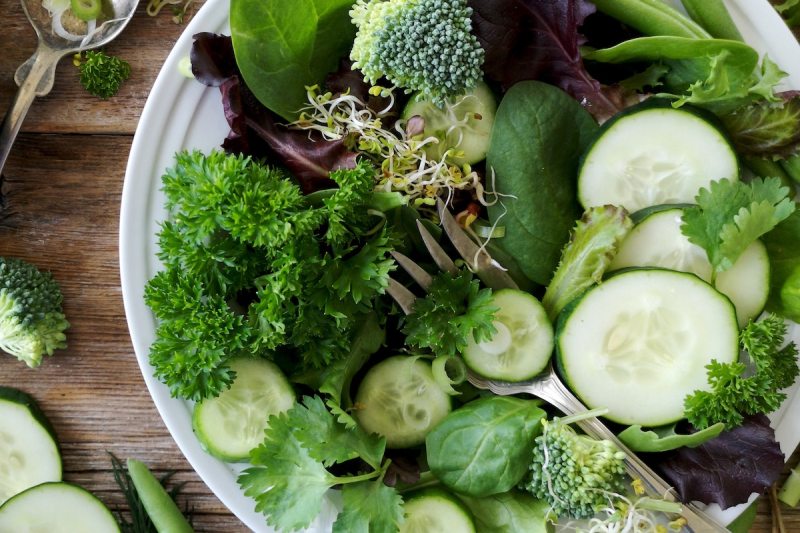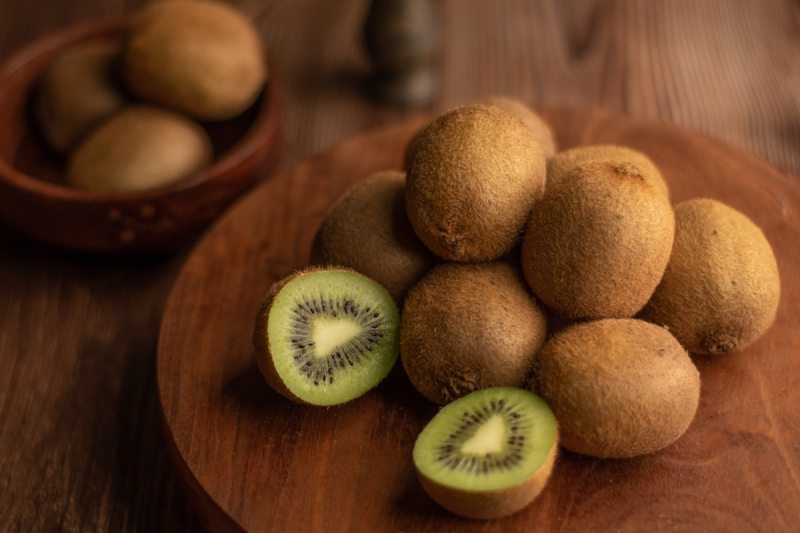It’s perhaps not the most talked-about or sexiest vitamin out there (we see you, vitamin C), but vitamin K is important nonetheless. You’re probably already getting some through your regular diet but there’s a good chance you could use a pinch more. But how? And why?
Because vitamin K serves the body well. The nutrient helps with coagulation when you’re wounded, bone metabolism, and the vital functions of your heart and vessels. When you’re not taking in enough of the stuff, bad things can happen, like bleeding disorders or cardiovascular issues.

Like vitamins A, D, and E, vitamin K is a fat-soluble vitamin so the absorption is enhanced when foods high in vitamin K are consumed alongside fats or oils. There are two primary types of vitamin K compounds: phylloquinone (vitamin K1) and a group of menaquinones (collectively referred to as vitamin K2). Phylloquinone is mainly found in green leafy vegetables while menaquinones are produced by bacteria, so they are found in fermented foods and some animal-based foods.
For most adult males, the adequate intake (AI) of vitamin K is 120 mcg, and 90 mcg for females. Those taking blood thinners like Warfarin (Coumadin) may have different needs, as these drugs effectively inactivate vitamin K. Not sure where to start with getting enough vitamin K? Get ready to see a lot of green, plant-based foods in our list of the foods highest in vitamin K.
Parsley
Parsley contains more vitamin K than any other food. One cup of this common herb provides a whopping 820% of the daily value. Consider adding fresh parsley to salads, sandwiches and burgers, tabbouleh, and hummus.
Kale and other leafy greens
Across the board, one of the best dietary sources of vitamin K is leafy green vegetables. One cup of cooked spinach, for instance, provides an impressive 740% of the daily value. Kale is also exceptionally high in vitamin K, with one cup of this cooked cruciferous veggie providing 544 mcg of vitamin K, which is over 4.5 times the daily value. Collards, beet greens, and turnip greens each also provide over 450% of the daily value of vitamin K. Even if dark leafy greens aren’t your go-to salad green, you can get plenty of vitamin K in lettuces. One cup of butter lettuce contains 56 mcg, which is nearly half of the daily value. Even iceberg lettuce contains a decent amount.
Natto
Natto is a funky, sticky, fermented soybean product commonly consumed as porridge and condiment in Japan. It’s packed with probiotics, protein, and antioxidants, and the bacteria that carry out the fermenting process make it one of the foods highest in vitamin K2. A mere three ounces contains 850 mcg, which is over seven times the daily value. Studies have found diets high in natto are able to improve bone health in patients with osteoporosis.
Broccoli
Broccoli is championed for its fiber, calcium, and vitamin C content, but it’s also quite high in vitamin K. One cup of cooked broccoli provides 220 mcg, which is nearly two times the daily value. Broccoli rabe is also high in vitamin K, with 75% of the daily value per cup.
Brussels sprouts
Like broccoli, Brussels sprouts are a cruciferous vegetable packed with antioxidants and vitamins C and K. For example, each cup of cooked Brussels sprouts contains 107% of the recommended daily intake of vitamin C and 182% of the daily value of vitamin K, with about 219 mcg.
Cabbage
You may be noticing a trend that green cruciferous vegetables are high in vitamin K. Cabbage is no exception, as each cup of cooked cabbage packs in about 165 mcg, or 136% of the daily value. Like other green veggies, this vitamin K is the in form of phylloquinone (vitamin K1), but sauerkraut, which is fermented cabbage, is also a good source of vitamin K2 because the lactobacillus bacteria produce vitamin K2 as a byproduct of the fermentation process. Therefore, enjoying a nice sauerkraut slaw will give you a healthy dose of both forms of this essential nutrient.
Pickles and fermented vegetables
The pickling or fermenting process that helps create pickles or slaws like kimchi and sauerkraut and makes them rich sources of probiotics also produces menaquinones, vitamin K2. One cup of pickled cucumbers contains 130 mcg (109% DV) of vitamin K. Kimchi, a spicy, salty, tangy condiment, has 65 mcg per cup.
Okra
Okra can be a bit of a polarizing food, as it’s texture can be slimy if it’s not stewed or prepared well. However, it’s a favorite veggie in the South and also a good source of vitamin K. One cup of cooked okra contains 64 mcg, which is just over half your daily requirement. Other green vegetables high in vitamin K are green beans and green peas.
Asparagus
Asparagus is one of the best sources of prebiotics, which are certain dietary fibers that our own bodies cannot digest but that are a nutrient elixir for the beneficial bacteria in the gut. Asparagus is also high in vitamin K, with 91 mcg per cup, which is over 75% of the daily value.
Edamame
One of the reasons natto is especially high in vitamin K is that, in addition to the bacteria that produce vitamin K2 through fermentation, the soybeans themselves are high in vitamin K. For example, a cup of cooked soybeans has 66 mcg (55% DV), while a cup of edamame has 41 mcg. This healthy legume is also rich in antioxidants, fiber, and protein.
Fennel
Fennel is a crisp, anise-flavored bulb with delicate, edible fronds. It’s used extensively in Italian cuisine and is a prominent vegetable in the heart-healthy Mediterranean Diet. Fennel is a good source of prebiotic fiber and provides 55 mcg (46% DV) of vitamin K per cup.
Pesto
Pesto is a sauce or condiment made with basil, olive oil, pine nuts, and Parmesan cheese. It can also contain other herbs like parsley. Several of these ingredients are exceptionally high in vitamin K, such as basil and parsley, as well as pine nuts. One ounce of pine nuts has 15 mcg of vitamin K. Accordingly, a quarter-cup of pesto sauce has 95 mg of vitamin K, which is nearly 80% of the daily value.
Kiwi Fruit

Kiwi fruit is packed with vitamin C along with vitamin E and several essential minerals. Kiwi, which has delicate flesh and small, edible seeds, is also high in vitamin K. Each cup provides about 73 mcg, which is 60% of the daily value. Other fruits high in vitamin K include avocado, pumpkin, pomegranate, blueberries, and blackberries.
With the above on your shopping list, you’ll be in good shape from a vitamin K standpoint. The nutrient will serve you well and, fortunately, comes in so many foods that you’ll never get bored intaking the stuff. Now get back to prepping those healthy leafy greens.
Editors' Recommendations
- 12 delicious foods high in vitamin E for skin, hair, and heart health
- 9 best food sources for getting beta-carotene in your diet
- Study reveals another great reason to follow the Mediterranean diet (that has nothing to do with your health)
- Elevate your takeout food with the right wine (they’re all under $22, too!)
- These foods are high in soluble fiber and vital for good health
















